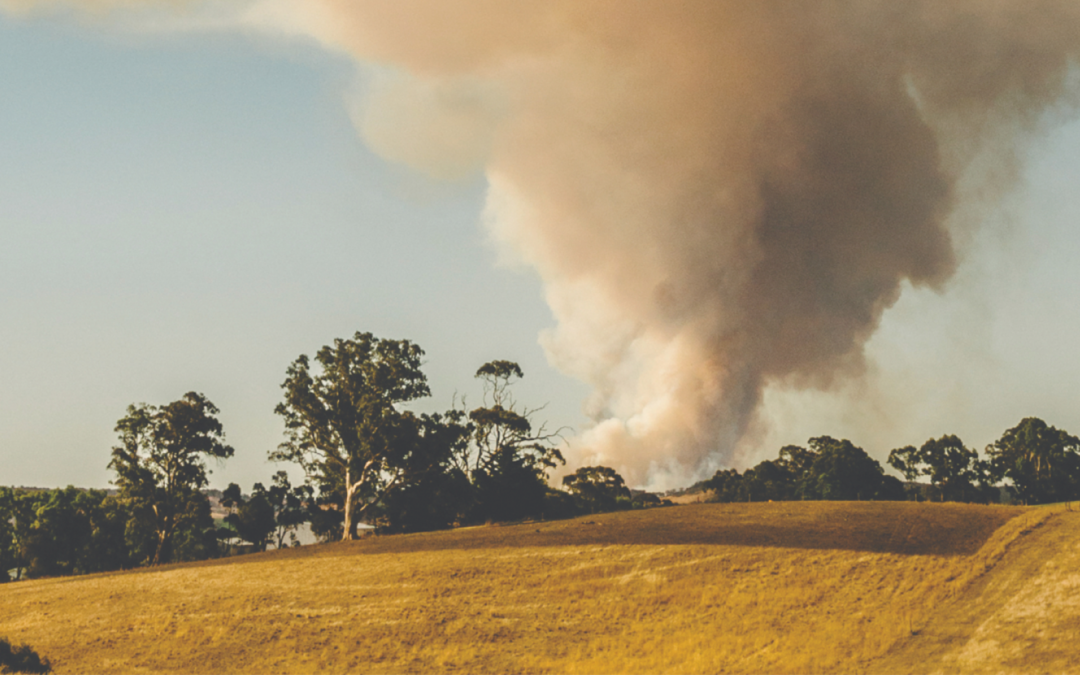As bushfire season approaches, it’s time to take action and prepare your home. One resource often overlooked is your rainwater tank, which can play a vital role in your bushfire survival plan. Here are the steps you need to take to prepare and manage your rainwater system:
Before a bushfire
- Trim back any overhanging branches: Trim back any branches that hang over your roof catchment area. This reduces the risk of embers setting your home alight and keeps your rainwater clean.
- Remove potential fuel for fires: Removing any material around your home that can burn. It’s a simple act with a big impact!
- Clean leaves and debris out of your gutters: Clean gutters aren’t just about water flow; they’re about removing potential kindling from your home’s immediate environment. To keep your gutters free from leaves and debris and protect your home from ember attack install ember guard.
- Clean rain heads and tank screens: Remove any built up debris from your rain heads and tank screens that may be at risk of igniting.
- Know your water level: Your rainwater tank is a lifeline during bushfire season. It’s not just for drinking, but also for firefighting. To ensure you know your water level at all times install a Tank Gauge Plus.
- Install a Fire Plug to fill your gutters with water: This innovative solution could safeguard your home from flying embers. By filling your gutters with water, you create a barrier that helps to protect your home.
- Disconnect downpipes during nearby bushfires: This is a crucial step. If there’s a bushfire nearby, disconnect your downpipes from your tank to prevent ash-filled water from contaminating your supply. An easy way to disconnect your downpipes is to install a Downpipe Interceptor or Fire Plug.
- Seal the openings to your tank: Sealing the openings to your tank can provide an extra layer of protection against contamination from smoke, ash, debris and fire-fighting chemicals.
After a bushfire
Once it is safe to do so:
- Disconnect or redirect the pipes: If you haven’t already, disconnect or redirect the pipes leading to your rainwater tank. This prevents any residual contaminants from the fire from entering the tank.
- Remove debris and clean roof and gutters: Remove any debris present on the roof or in the guttering. Thoroughly clean the roof and gutters using water known to be safe. A mild detergent may be necessary to remove stubborn residues.
- Reconnect the pipes: After cleaning, reconnect the pipes that direct water to your tank. Ensure that if you have a first-flush diverter installed it is in good working order.
- Inspect your tank: If it has rained since the bushfire and before the pipes were disconnected or redirected, ash and other contaminants may have flowed into the tank. In such cases, drain and clean your tank. The drained water can be repurposed for non-potable uses such as watering the garden.
- Refill the tank: Refill your tank with water from a known safe source for drinking purposes after it has been cleaned.
- Seek expert assistance if needed: In the unfortunate event that the bushfire has damaged the tank’s integrity, expert assistance may be required for draining, repairing, or even replacing the tank. Exercise caution when working around tanks damaged by bushfires.
By following these steps before and after a bushfire, you can safeguard your rainwater and ensure the continued availability of safe water.
